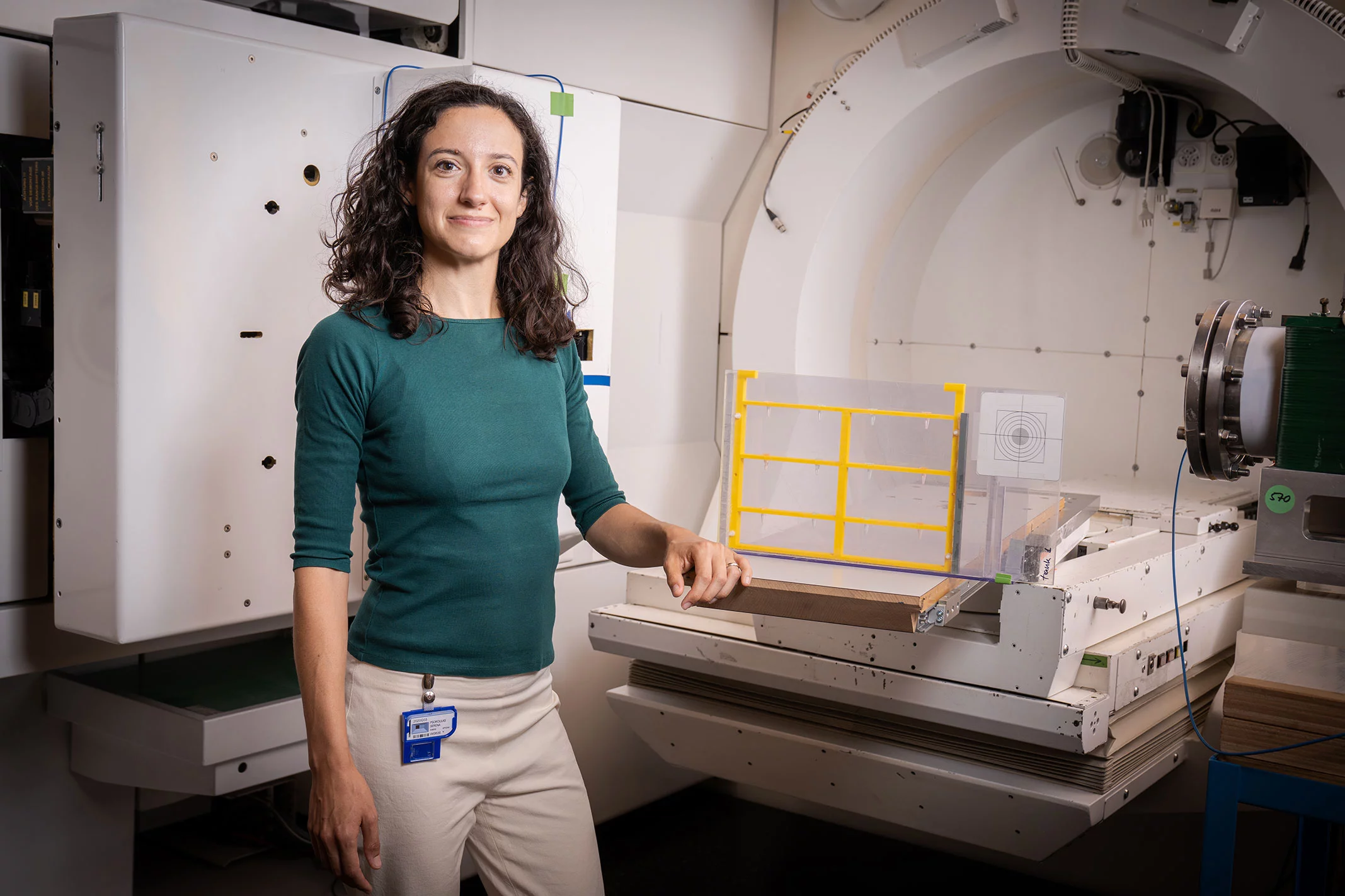For the first time, researchers at the Centre for Proton Therapy at the Paul Scherrer Institute PSI in Switzerland have tested ultrafast, high-dose irradiation with protons. This new, experimental FLASH technique could revolutionise radiation therapy for cancer and save patients many weeks of treatment.
In nature, lightning strikes with a short, strong flash of light and a high energy discharge. In radiation medicine, FLASH also stands for ultrashort, high-dose, one-time irradiation, and in the future it could save patients many weeks of treatment. At the Centre for Proton Therapy CPT, PSI researchers are testing whether FLASH is also suitable for proton irradiation using the spot-scanning technology developed at PSI. For their experiments, CPT head and chief physician Damien Weber and his team at PSI are collaborating with the Centre hospitalier universitaire vaudois (CHUV) in Lausanne. There, based on a guideline of the Swiss Academy of Medical Sciences (SAMS), the only patient in the world to date has been irradiated using the FLASH technique in order to heal a malignant tumour in the skin. Unlike at PSI, the researchers at CHUV use electron beams. These are only suitable for very superficial tumours. In contrast, the protons used at PSI also reach tumours deep inside the body and can be stopped precisely at the site in the body where they should have their maximum effect on the cancer cells.
Short and intense
"If we can achieve the high precision and the good outcome of proton therapy with FLASH irradiation without damaging healthy tissue, this would be a huge step forward," says Damien Weber. Treatments could be much shorter and less stressful for patients. "If the principle works, the patients would only have to come for radiation treatment a few times, ideally only one to five times. The treatment appointments that open up as a result would be available to other cancer patients." Because of the extremely short irradiation, it is even possible to use the FLASH technique to treat tissue in the lungs, which changes its position with every breath. However, before the process is technically mature enough to be used routinely with patients, it will take many years of technical development and a great many tests. With FLASH, a radiation dose rate of up to 1,000 gray per second is applied; that is a radiation dose per second roughly a hundred times higher than in the usual treatments. This destroys the tumour cells very effectively. "But first and foremost, we need evidence that proton irradiation with the FLASH technique does not damage healthy body tissue," says Weber.
In their experiments, the PSI researchers therefore want to use the maximum possible intensity of the beam and direct it without losses onto biological tissue that is less than a millimetre thick. For this purpose, particle physicist Serena Psoroulas and her team have optimised the beam guidance settings in a former treatment station for proton therapy at PSI, known as Gantry 1. "The older colleagues here at PSI in particular have a lot of experience because they developed, constructed, and tested the equipment themselves," says Psoroulas. "They have set up the monitoring and safety systems and written the program code for the irradiation." The PSI researchers have now used this know-how, which spans high-performance engineering, medical expertise, and physics, to carry out the world's first experiments in FLASH irradiation with the spot-scanning technology developed at PSI.
Strong partnership
So far, the researchers have carried out two series of experiments with the FLASH technique at PSI. Weber's team works closely with radiation biologist Marie-Catherine Vozenin and her team from CHUV. Together, the two researchers planned all of the experiments in the project, which is funded by the Swiss National Science Foundation (SNSF grant number 190663) and an industrial partner. In parallel and simultaneously, they irradiate tissue with protons at PSI and with electron beams at CHUV. The radiobiological laboratory at CHUV then analyses what effects the FLASH radiation has on biological tissue. The researchers at PSI especially appreciate the strong partnership with CHUV. Both institutions are also part of a consortium committed to exploring FLASH therapy for use on patients. Damien Weber: "Through our synergies in collaboration and our joint experiments, we hope to better understand and further develop FLASH technology." In the success story of proton therapy at PSI, a new chapter is beginning.
Contact
About PSI
The Paul Scherrer Institute PSI develops, builds and operates large, complex research facilities and makes them available to the national and international research community. The institute's own key research priorities are in the fields of future technologies, energy and climate, health innovation and fundamentals of nature. PSI is committed to the training of future generations. Therefore about one quarter of our staff are post-docs, post-graduates or apprentices. Altogether PSI employs 2300 people, thus being the largest research institute in Switzerland. The annual budget amounts to approximately CHF 460 million. PSI is part of the ETH Domain, with the other members being the two Swiss Federal Institutes of Technology, ETH Zurich and EPFL Lausanne, as well as Eawag (Swiss Federal Institute of Aquatic Science and Technology), Empa (Swiss Federal Laboratories for Materials Science and Technology) and WSL (Swiss Federal Institute for Forest, Snow and Landscape Research). (Last updated in June 2024)

